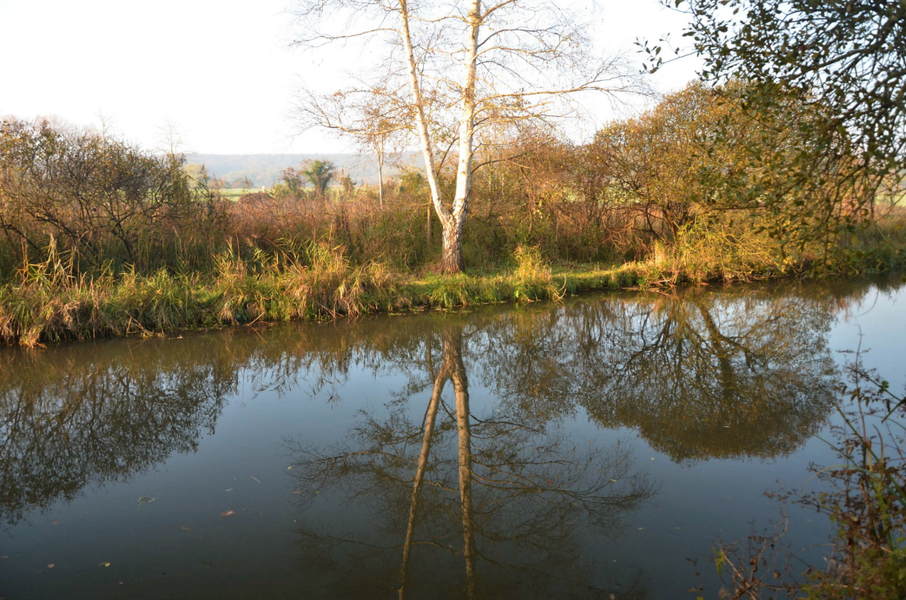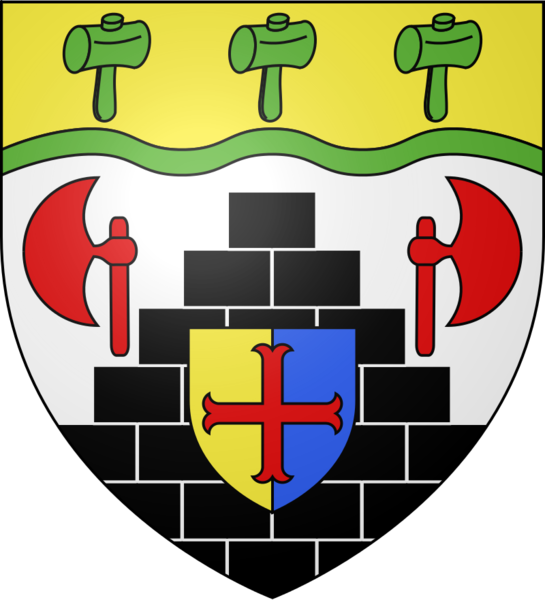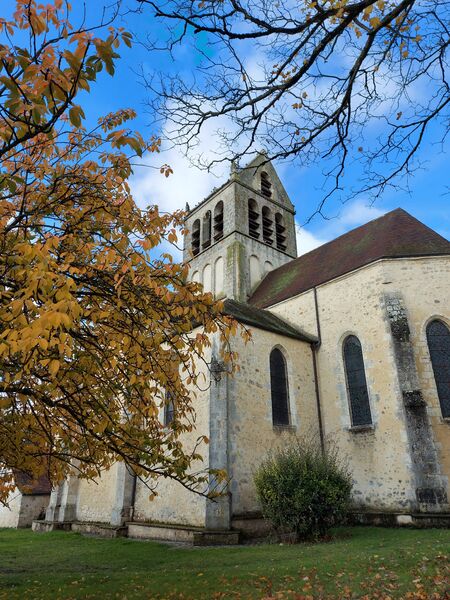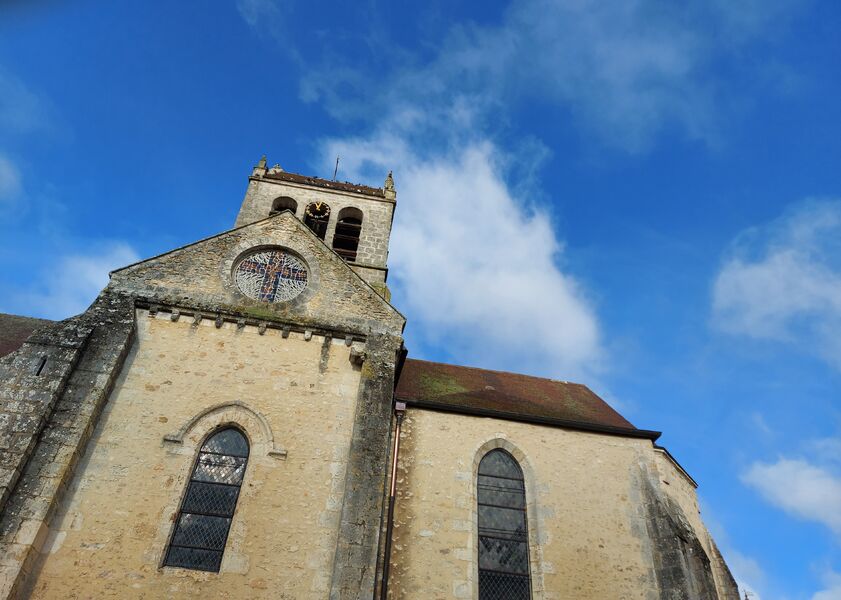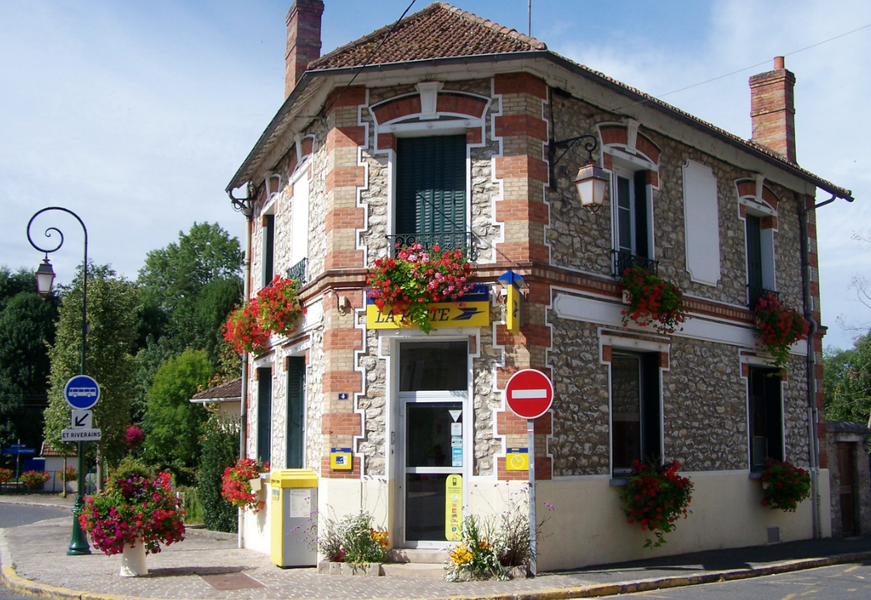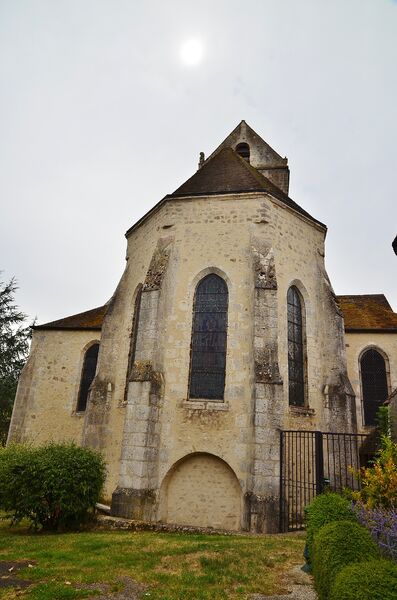Boutigny sur Essonne
Boutigny-sur-Essonne
Patrimoine culturel
Boutigny-sur-Essonne is a village part of the Parc Naturel Régional du Gâtinais Français and is crossed by the Essonne River. Its history is very rich and proudly went through ages.
-------------
HISTORY
As several villages in the area, Boutigny-sur-Essonne is a place where a lot of prehistoric vestiges have been found. The rock masses along the Essonne River were used as shelters by the population at the time. A lot of paintings and engraving in caves have been found. One of the most famous is the cave “grotte de la Justice” which was discovered in 1953. Inside, there are a lot of paintings made with ochre, especially one representing a deer from the Paleolithic era.
During the Gallo-Roman times, a village was located at the “hameau des Audigers' in the south of the actual village. The name Boutigny-sur-Essonne was “Butigniacus'' in 1176. This name could come from the Roman surname Botegnus which we added the Latine suffix of -acum.
Some Frank relics also were found in Boutigny like sarcophagus in the locality of Jarcy. Those sarcophagi were accompanied by different objects made of iron and bronze, some bones and some weapons.
The seigneury of Boutigny was created around 1240 during the Middle Age. Different families ruled as there were several strongholds. The most important was Château-Gaillard in the locality of Jarcy. Until the 14th century, the castle of the lord of Boutigny was referred to as a “fortified place of the Gâtinais”.
During the 16th century, the history of the village was connected to the famous chancellor Michel de l’Hospital. He was an advocate for peace during the religious war between the Huguenots (French Protestants) and the Catholics. He was regularly living in the castle of Belesbat in Boutigny as his daughter and her husband were living here. Michel de l’Hospital died in this same castle in 1573.
The end of the 19th century and the beginning of the 20th century experienced the rising of the sandstone quarries. The hundreds of quarries around here were employing a lot of people, one thirds of Boutigny’s inhabitants worked there. Boutigny-sur-Essonne was even considered as one of the capital cities of pavement and street curb during the golden age. The railway line could send 15 to 20 wagons of pavements and street curbs to Paris each day.
During World War II, Boutigny-sur-Essonne was freed by the American Army in August 1944.
-------------
HERITAGE :
The Church of Saint-Barthélémy
The charming church of Boutigny-sur-Essonne was built during the 13th century. Despite its numerous rehabilitations throughout the centuries, a lot of medieval vestiges dating from its construction remain : the portal, its cross vault and its carved capitals in the transept.
During the 19th century, the church had a lot of work done to restore it. The most important work is a spandrel onto the main portal which represents the flagellation of Christ. This piece of art is nowadays exposed in the Louvre museum. The spandrel in the church is a mould.
The church has some really interesting furniture. Its bronze bell is named Marie and was installed in 1557 and then restored in 1998. In the church you can see two oil on canvas made by the famous neo-classical painter Jean-Baptiste Wicar. The church has been classified as part of the Monuments Historiques since 1925.
++++
Le Château de Belesbat (the castle of Belesbat)
This castle was built during the 15th and 16th centuries and was once the property of Jean Hurault de la Grange, the husband of the chancellor Michel de l’Hospital’s daughter. This famous French statesman died in this same castle in 1573. The castle was quite well-known at the time because of its beauty and its pretty garden. A lot of famous people were familiar to the castle such as the king Henri VI or Voltaire. After that, a lot of different noble families were owners of the castle throughout the years.
During World War I, the castle was used as an infirmary. Then, during World War II, it was stolen by Germans as the owners were Jews. German soldiers degraded the castle. It took a long time to renovate it. Then, the castle had different uses such as a hotel or a golf for rich persons. The gatehouse has been classified as part of the Monuments Historiques since 1948.
++++
The Abri du Rocher Châtillon (cave)
It is located in the middle of the forest, surrounded by hiking paths and rock climbing spots. The cave was occupied during the Neolithic era so a lot of engravings were found inside of it. Those engravings are showing, for example, a man’s silhouette and an owl.
++++
The Sandstone Quarries
During the 19th and 20th centuries, Boutigny was one of the most important villages when it came to the production of pavements and street curbs made of sandstone thanks to its surrounding quarries. Workers from the entire country, and even from abroad, were coming to work in Boutigny’s quarries. Nowadays, those quarries are not used anymore (except one open sky quarry still working in another village near Boutigny-sur-Essonne) but those long years of exploitation left some scars in the landscape.
SOURCE : Mairie de Boutigny-sur-Essonne, t4t35.fr, Les Amis de Milly-en-Gâtinais et Environs, Parc Naturel Régional du Gâtinais Français
HISTORY
As several villages in the area, Boutigny-sur-Essonne is a place where a lot of prehistoric vestiges have been found. The rock masses along the Essonne River were used as shelters by the population at the time. A lot of paintings and engraving in caves have been found. One of the most famous is the cave “grotte de la Justice” which was discovered in 1953. Inside, there are a lot of paintings made with ochre, especially one representing a deer from the Paleolithic era.
During the Gallo-Roman times, a village was located at the “hameau des Audigers' in the south of the actual village. The name Boutigny-sur-Essonne was “Butigniacus'' in 1176. This name could come from the Roman surname Botegnus which we added the Latine suffix of -acum.
Some Frank relics also were found in Boutigny like sarcophagus in the locality of Jarcy. Those sarcophagi were accompanied by different objects made of iron and bronze, some bones and some weapons.
The seigneury of Boutigny was created around 1240 during the Middle Age. Different families ruled as there were several strongholds. The most important was Château-Gaillard in the locality of Jarcy. Until the 14th century, the castle of the lord of Boutigny was referred to as a “fortified place of the Gâtinais”.
During the 16th century, the history of the village was connected to the famous chancellor Michel de l’Hospital. He was an advocate for peace during the religious war between the Huguenots (French Protestants) and the Catholics. He was regularly living in the castle of Belesbat in Boutigny as his daughter and her husband were living here. Michel de l’Hospital died in this same castle in 1573.
The end of the 19th century and the beginning of the 20th century experienced the rising of the sandstone quarries. The hundreds of quarries around here were employing a lot of people, one thirds of Boutigny’s inhabitants worked there. Boutigny-sur-Essonne was even considered as one of the capital cities of pavement and street curb during the golden age. The railway line could send 15 to 20 wagons of pavements and street curbs to Paris each day.
During World War II, Boutigny-sur-Essonne was freed by the American Army in August 1944.
-------------
HERITAGE :
The Church of Saint-Barthélémy
The charming church of Boutigny-sur-Essonne was built during the 13th century. Despite its numerous rehabilitations throughout the centuries, a lot of medieval vestiges dating from its construction remain : the portal, its cross vault and its carved capitals in the transept.
During the 19th century, the church had a lot of work done to restore it. The most important work is a spandrel onto the main portal which represents the flagellation of Christ. This piece of art is nowadays exposed in the Louvre museum. The spandrel in the church is a mould.
The church has some really interesting furniture. Its bronze bell is named Marie and was installed in 1557 and then restored in 1998. In the church you can see two oil on canvas made by the famous neo-classical painter Jean-Baptiste Wicar. The church has been classified as part of the Monuments Historiques since 1925.
++++
Le Château de Belesbat (the castle of Belesbat)
This castle was built during the 15th and 16th centuries and was once the property of Jean Hurault de la Grange, the husband of the chancellor Michel de l’Hospital’s daughter. This famous French statesman died in this same castle in 1573. The castle was quite well-known at the time because of its beauty and its pretty garden. A lot of famous people were familiar to the castle such as the king Henri VI or Voltaire. After that, a lot of different noble families were owners of the castle throughout the years.
During World War I, the castle was used as an infirmary. Then, during World War II, it was stolen by Germans as the owners were Jews. German soldiers degraded the castle. It took a long time to renovate it. Then, the castle had different uses such as a hotel or a golf for rich persons. The gatehouse has been classified as part of the Monuments Historiques since 1948.
++++
The Abri du Rocher Châtillon (cave)
It is located in the middle of the forest, surrounded by hiking paths and rock climbing spots. The cave was occupied during the Neolithic era so a lot of engravings were found inside of it. Those engravings are showing, for example, a man’s silhouette and an owl.
++++
The Sandstone Quarries
During the 19th and 20th centuries, Boutigny was one of the most important villages when it came to the production of pavements and street curbs made of sandstone thanks to its surrounding quarries. Workers from the entire country, and even from abroad, were coming to work in Boutigny’s quarries. Nowadays, those quarries are not used anymore (except one open sky quarry still working in another village near Boutigny-sur-Essonne) but those long years of exploitation left some scars in the landscape.
SOURCE : Mairie de Boutigny-sur-Essonne, t4t35.fr, Les Amis de Milly-en-Gâtinais et Environs, Parc Naturel Régional du Gâtinais Français
Prestations, conforts et services
- French


